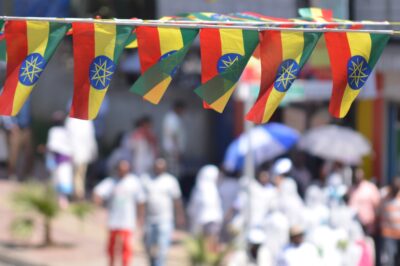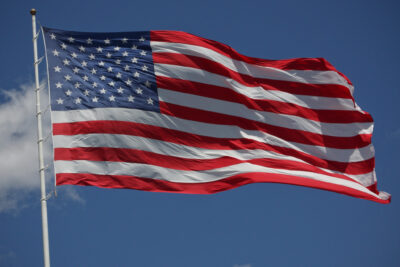Uchimura Kanzō wanted Americans to be more nuanced. A Japanese convert to Christianity, he came to the United States in his twenties, where he found himself scrutinized by Americans curious to see what conversion could do to former “heathens.” “There are some people who seem to imagine that the cause of Missions can be upheld only by picturing the darkness of heathens in contrast with the light of Christians,” he complained. “So they make a diagram showing heathens by jet-black squares, and Protestant Christians by white squares.” In a remarkable diary published in New York City in 1895, Uchimura refused to cede his story to missionaries and showed how the lines between “heathenness” and Christianity were much blurrier than Americans imagined.
I want to develop Uchimura’s critique of the black-and-white lens through which Americans viewed the “Christian” versus the “heathen” to think about how Americans have tended to see race through a similar lens. Just as Uchimura complicated Americans’ perception of “heathens” vs. “Christians,” so his experience as an Asian traveling in the United States complicates our understanding of the relationship between religion and race in the United States. Race and religion create powerful and intertwined systems of othering, and attending to the experiences of Asian Americans and Asians in the United States can nuance our view of these processes.
Uchimura came to the United States in the mid-1880s, enrolling at Amherst College. He had already obtained a bachelor’s degree in Japan, where he had begun exploring Christianity. At one point, Uchimura was taken by Amherst’s president to a “great missionary meeting.” The president likely hoped that Uchimura would share his conversion story with the crowds. Uchimura was chagrined. He charged that the “worst lot” in these “Mission-shows…falls to some specimens of converted heathens who happen to be there. They are sure to be made good use of, as circus-men make use of tamed rhinoceroses.”
What Uchimura described was an American investment in the exotic. While conversion was supposed to turn the “heathen” into the “Christian,” white Americans continued to see converts from other cultures as different, to expect them to dress up and perform in native languages, and to look to that difference for their own edification and entertainment. Converts had to showcase their former heathenism in front of huge crowds to demonstrate what Christianity had purportedly rescued them from. If a convert said anything positive about their “heathenish” people, they found “no approbation.”
But there are “other rhinoceroses who do not like to be so used,” said Uchimura, and he counted himself among them. He appreciated things about his “heathen” homeland and was sorely disappointed by many things in the “Christian” United States.
Nothing disappointed Uchimura more than Americans’ racism. “In no other respect,” he wrote, “did Christendom appear to me more like heathendom than in a strong race prejudice still existing among its people.” Uchimura described Native Americans as people “from whom the land was wrested by many cruel and inhuman means,” who were “still looked upon by the commonality as no better than buffaloes or Rocky Mountain sheep.” As for African Americans, although a war had been fought to “atone for the iniquity of merchandising upon God’s images,” the “Japhetic vanity” of white Americans still kept in place a “sharp racial distinction” that Uchimura saw as “very Pagan-like.” And the hypocritical exclusion of the Chinese was “something which we in heathendom have never seen the like.” How could Americans “sen[d] over missionaries to China,” he wondered, but “abho[r] even the shadow of a Chinaman cast upon its soil”?
Since white Americans could not tell the difference between Japanese and Chinese people, Uchimura experienced firsthand the kind of treatment Chinese laborers endured in the U.S. “[T]o receive in my person all the indignities and asperities with which the poor coolies from Canton are goaded by the American populace, required nothing less than Christian forbearance to keep my head and heart in right order,” he groused.
What Uchimura discovered in the United States was that he could not simply be himself—an individual from Japan who found some aspects of Christianity compelling and others not; who found some aspects of the United States worth emulating and others fraught. He was instead forced into one of two types: the penitent “tamed rhinoceros,” who could find an (exoticized) place in the United States if he continued to parade himself before eager paternalists; or the perpetually heathen Other who couldn’t be distinguished from those already racialized as suspect and even abhorrent.
Uchimura’s experience with these types speaks to two interlocking religio-racial systems in the United States: one that operates through a Black-white paradigm, and the other through a Christian-heathen binary. When it comes to understanding how race works in the United States, the Black-white paradigm has been the subject of more attention than the Christian-heathen binary and has generated critical and essential scholarship across disciplines. Still, as Judith Weisenfeld has written, “Too often in scholarship and teaching on religion in the United States, invoking ‘race’ signals some brief attention to African Americans and religion…, rather than theoretical or historical consideration of racial construction, hierarchy, and their effects.” Attending to a Christian-heathen binary can help us heed Weisenfeld’s call to more fully understand how racial construction works in the United States. Religious othering operates alongside a Black-white paradigm to keep all nonwhite and historically non-Christian people beneath the figure of the white savior.
The Black-white paradigm of racial formation sets whiteness at the top and Blackness at the bottom of a racial ladder. In this system, people who are neither white nor Black—like Asians and Asian Americans—find themselves in ambiguous positions. The system works through a divide-and-conquer strategy by pitting these people against African Americans and leveraging anti-Blackness as a way to prevent interracial solidarities from forming. As Claire Jean Kim has shown, the model minority myth triangulates Asian Americans against African Americans, driving a wedge between communities as Asian Americans angle towards whiteness. Some have even seen the model minority myth as a sign that Asian Americans are “next in line to become White.”
When a Christian-heathen binary is overlaid on the Black-white ladder, it becomes clear how whiteness has been historically aligned with Christianity (and, by extension, with blessedness and salvation), while Blackness has been historically aligned with heathenism (see Sylvester Johnson’s The Myth of Ham). In an American context that privileges Protestantism as the highest (and, for some, the only true) form of Christianity, one way for individuals on the middle of the ladder to try to move towards whiteness has been to perform a particular religious identity—a white Protestant one—to try to prove their proximity to the “blessed.”
For Uchimura, that meant playing the role of penitent rhinoceros. He was “ashamed” to admit that he did this “about half-a-dozen times” when money was scarce (white paternalists happily gave to “heathen” converts who played their parts with due humility). But even that role was constrained. Converts could never simply be “Christian” without also and always being former “heathens” who were ever cognizant—and made cognizant—of their difference. That is to say, there was always a ceiling below whiteness on the racial ladder, and that ceiling was a heathen one.
In my book Heathen: Religion and Race in American History, I show how the “heathen ceiling” blocked any nonwhite people who threatened to climb too close to whiteness on the racial ladder. The heathen convert could never be fully accepted, and the penitent rhinoceros could all too easily slide into the perpetually heathen Other, as Uchimura himself discovered. White Americans read heathenness as a mark of inferiority and neediness not only on souls but also on bodies, and not only on individual bodies but also on the lands they came from. In the late-nineteenth century, China was the “heathen” land that seemed most threatening to white American nativists, who sought to exclude the Chinese based on their supposed incompatibility with American civilization. Irish Catholics, historically looked upon with suspicion by Anglo-Protestants, claimed their own whiteness vis-à-vis the “heathen” Chinese. Uchimura’s experience of being treated as a “heathen” Chinese showed how, even if he was in the process of conversion, the fact that he looked like people from the “heathen world” was enough to lump him in with the rest.
In the United States, then, white Americans have used a Black-white ladder to keep people of color from forming alliances, while drawing on a Christian-heathen binary to keep their aspirations in check and remind them that, ultimately, white paternalists would view them as people from the inferior “heathen world.”
Yet even as he was caught in these mutually reinforcing religio-racial systems, Uchimura showed that another way was possible. Rather than give into the divisive tactics of the Black-white ladder, he bemoaned racism across the board and maintained that “this world is a unit, and the human race is one great family.” And rather than accept the stark division between the “heathen” and the “Christian,” he turned the label of “heathen” onto Christians, accusing them of a most “Pagan-like” racial prejudice. He rejected the roles of erstwhile heathen rhinoceros or perpetually heathen Other and forged his own, independent path. Turned off by the “Americanianity and Anglicanianity imposed upon us as Christianity,” he returned to Japan, where he would ultimately found his own version of Christianity, the Mukyōkai-shugi (Non-Church Movement). Uchimura would be no one’s model minority. He would not parade his story before an audience that would offer him conditional acceptance only if he displayed—in order to reject—his culture and people as the price of admission.













